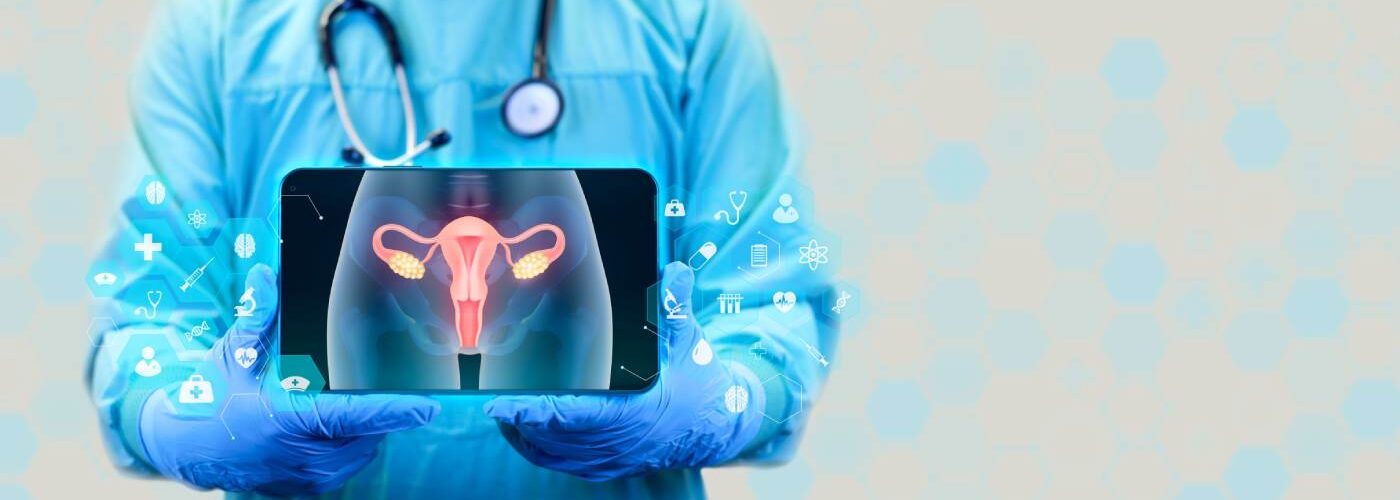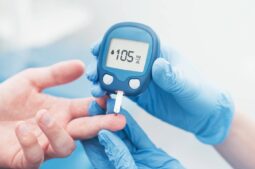
Hysterosalpingogram, also known as hysterosalpingography, is a gynecological imaging test used to evaluate the uterus and fallopian tubes with the help of contrast material. It is common in fertility evaluations to detect possible blockages or abnormalities that could hinder conception. The procedure is like a routine gynecological exam and does not require hospitalization.
How should I prepare for the exam?
To prepare for the exam, patients must fast for at least 4 hours before the test. In addition, an enema will be administered the night before.
According to the gynecologist’s instructions, the patient will take a prescribed antibiotic and may also receive a sedative if indicated by a doctor.
The test should be scheduled after menstruation but before ovulation (no more than 15 days after the first day of the menstrual cycle).
What does the exam feel like?
During the procedure, the patient may feel some discomfort when the specialist inserts the speculum into the vagina. However, the sensation is usually like that of a Pap smear, with a feeling of pressure.
Some women experience cramping during hysterosalpingography, which can feel like menstrual pain. Additionally, if the contrast medium leaks from the fallopian tubes, it may cause irritation or inflammation in surrounding tissues.
This image shows you what hysterosalpingogram involves:

In what situations is this test performed?
This exam determines whether there is a blockage in the fallopian tubes or any other complications. It is also useful to evaluate infertility or to confirm that the fallopian tubes are completely blocked following a tubal ligation.
What do abnormal hysterosalpingogram results indicate?
They may be due to:
- Developmental disorders in the structure of the uterus or fallopian tubes.
- The presence of scar tissue or adhesions that could hinder fertilization and pregnancy.
- Blockage of the fallopian tubes or the presence of foreign bodies.
- Tumors or polyps in the uterus.
What are the risks of the procedure?
Potential risks include allergic reaction to the contrast medium, infection of the endometrium, infection of the fallopian tubes, and, in rare cases, uterine perforation.
Is it possible to get pregnant the same month you have a hysterosalpingogram?
It is possible in some cases, although it does not happen for everyone and depends on the individual. Some reasons pregnancy may occur after the test include:
- The flushing of the fallopian tubes may clear out mucus or other blockages, allowing sperm to pass through more easily.
- The use of oil-based contrast material may enhance endometrial receptivity.
Can hysterosalpingography affect my menstrual cycle?
The correct answer is no. This test should not affect your menstrual cycle because the ovaries are not involved. However, some patients may experience slight discomfort a few days before their period due to minimal leakage of the contrast medium into the peritoneal cavity. The liquid is safe but may explain why the next cycle feels more painful than usual.
Can hysterosalpingogram unblock the fallopian tubes?
Yes, hysterosalpingography can help unblock the fallopian tubes. If this happens, the patient may be able to conceive naturally after the procedure.
What is virtual hysterosalpingogram?
Virtual hysterosalpingography (HSG) uses computed tomography (CT) to evaluate the uterus and fallopian tubes, providing three-dimensional and endoscopic-like images.
It is a diagnostic imaging procedure that uses CT scanning to visualize the inside and walls of the uterus and fallopian tubes.
How does it work?
Contrast material is administered to highlight internal structures. The CT scanner generates detailed, even 3D images that simulate endoscopic views.
What are its advantages?
- Virtual HSG offers greater precision and detail compared to traditional HSG.
- It is less painful and involves fewer risks since it doesn’t require manipulation of the cervix.
- It allows for 3D modeling and “virtual endoscopic tours.”
What is virtual HSG used for?
Virtual HSG allows to evaluate female fertility, detect blockages in the fallopian tubes, and identify uterine abnormalities. It also helps assess the presence of adhesions, polyps, or malformations.
How does it differ from traditional HSG?
The main difference lies in the imaging technique (CT vs. X-ray) and the fact that virtual HSG does not involve direct manipulation of the cervix.
Conclusions
- Hysterosalpingography (HSG) is a gynecological test used to assess the uterus and fallopian tubes using contrast material, commonly in fertility evaluations.
- Preparation includes fasting for 4 hours, scheduling the test between menstruation and ovulation, enema, antibiotics, and sometimes a sedative.
- It is performed to detect fallopian tube blockages, uterine problems, or infertility.
- Estimated cost: €100–150, depending on the clinic.
- Virtual hysterosalpingography (V-HSG) uses CT imaging to provide more detailed 3D images with less discomfort and fewer risks.
Bibliography
MedlinePlus. (31 de marzo de 2024). Histerosalpingografía. Enciclopedia médica. Recuperado de https://medlineplus.gov/spanish/ency/article/003404.htm
RadiologyInfo. (2024, 25 de agosto). Histerosalpingografía (Uterosalpingografía). RadiologyInfo.org. Recuperado el 2 de julio de 2025, de https://www.radiologyinfo.org/es/info/hysterosalp





Comments are closed here.